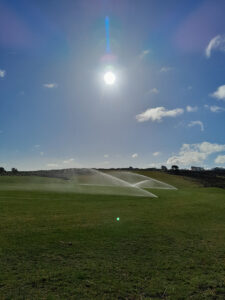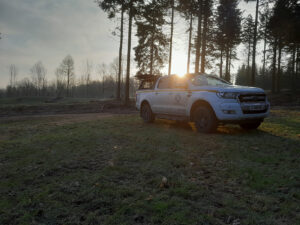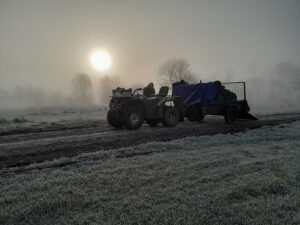How do you become an irrigation technician?
Related Articles
This is a question I’ve been asked a lot in recent years. I plan to answer it – it isn’t easy – over the coming issues, sharing technical knowledge and resources.
I feel the industry is waking up to the need for more available training and knowledge around irrigation.
Normally I find an irrigation tech has moved into the role overtime while being employed as a greenkeeper with knowledge passed on from colleagues. The person that’s been keen to help dig out a leak, re-level sprinklers and just simply be OK with getting wet and muddy.
The size of the golf club plays a large part in how much experience and time working with irrigation you would gain. There aren’t many job adverts that don’t state ‘irrigation experience preferred / required’.
Here are some key points I feel add towards either moving into the role or helping to gain more knowledge. (I still learn as I go and so do my staff. The industry develops, changes and, as importantly, so should you.)
Know the financial worth of irrigation products
This seems like a strange point to start with but it’s one of the most important. I’ve never been to a golf course that has an unlimited budget for buying parts and I look after a large portion of the ‘Top 100’ clubs in the UK.
It’s easy to change out irrigation parts like-for-like with brand new products, but is it always required?
Understanding the cost of the products, your time and the effect it may have on the club, such as an area being closed, are key. These all play a part in your day-to-day life as an irrigation tech.
This goes for any level of golf club, budget and age of an irrigation system.
For example, a valve in-head sprinkler has been damaged by a machine. It’s on the first green; it was isolated by a colleague and you have been made aware at the end of the day. Next day there is a shotgun start at 8am and it’s hot! Get in and out before the golfers and replace the entire unit. Keep the damaged unit you removed and breakdown for spares. Or, next day there is normal golf due to play and the weather isn’t too hot. Your investigation shows the sprinkler’s outer body is cracked. From a previous fix you have an outer body in stock without a coil and inner riser. Spend the time to create a working sprinkler combining all the parts.
Learn your craft
When you’re out on the course looking at an issue, always consider the basics your system requires to work.
Three key tips for fault finding
1. Check for human error, is the station on from the controller with a runtime inputted, auto position out at the sprinkler, pipe work isolated for an unknown issue? Go back to the basics before looking to replace any parts or spending time digging.
2. All copper should be shiny! Wiring joints that are darkened, muddy, wet and just simply not shiny copper wont conduct in an efficient way. Scrap the copper to create a shiny surface. Less voltage passing equals more issues. If you see it, then redo it!
3. Ohms your coils with a meter. Simply keep a brand-new coil of the same type in your toolbox to remind yourself what reading they should show. Test the new toolbox coil, then test the coil in the ground once unwired from any decoder.
Irrigation expert John Kidson will continue his irrigation tech guide over the next few issues. Contact him @JKIrrigation on all socials




























